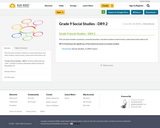
This unit plan includes vocabulary, essential questions, and what students need to know, understand and be able to do.
- Subject:
- Social Studies
- Material Type:
- Lesson
- Unit of Study
- Date Added:
- 10/18/2018

This unit plan includes vocabulary, essential questions, and what students need to know, understand and be able to do.

This is a sample unit for IN9.1, IN9.2, IN9.3, IN9.4 which includes lesson plan ideas, handouts and assignments. A great outline to start the year.
Developed by Kim Froese.
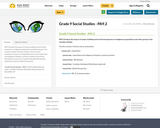
PA9.2 Analyze the impact of empire-building and territorial expansion on indigenous populations and other groups in the societies studied.
This file contains 5 lessons and an assessment:
Lesson one: Imperialism
Lesson two: Imperialism and Indigenous Peoples in ancient societies
Lesson three: Worldviews
Lesson four: Canadian Aboriginal Worldviews (optional)
Lesson five: World Perspective
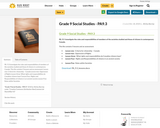
PA. 9.3 Investigate the roles and responsibilities of members of the societies studied and those of citizens in contemporary Canada.
This file contains 5 lessons and an assessment:
Lesson one: Criteria for citizenship – Canada
Lesson two: Oppression of Rights
Lesson three: What rights and responsibilities do Canadian citizens have?
Lesson Four: Rights and Responsibilities of citizens in an ancient society
Lesson Five: Roles within Societies
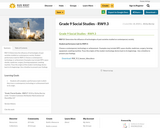
RW 9.3 Determine the influence of technologies of past societies studied on contemporary society.
Student performance task for RW9.3:
Choose a contemporary technology or achievement. Examples may include MP3, space shuttle, medicines, surgery, farming equipment, washing machine. Trace the origins of the modern technology device back to its beginnings. Use a timeline to present your findings.
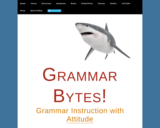
An excellent resource for grammar minilessons and activities that follow the transfer of responsibility model. Great videos and opportunities for We do and You do.

This lesson introduces the MRI Safety Grand Challenge question. Students are asked to write journal responses to the question and brainstorm what information they will need to answer the question. The ideas are shared with the class and recorded. Students then watch a video interview with a real life researcher to gain a professional perspective on MRI safety and brainstorm any additional ideas. The associated activity provides students the opportunity to visualize magnetic fields.

This lesson introduces the Bone Module Grand Challenge question. Students are asked to write their initial responses to the question alone. They will then brainstorm ideas with one other student. Finally, the ideas are shared with the class and recorded. It is important for students to gather information to decide whether or not this condition is hereditary. Students then watch two videos about osteoporosis. Grand Challenge Question: When you get home from school, your mother grabs you, and you rush to the hospital. Your grandmother fell and was rushed to the emergency room. The doctor tells your family your grandmother has a fractured hip, and he is referring her to an orthopedic specialist. The orthopedic doctor decides to perform a DEXA scan. The result showed her bone mineral density (BMD) was -3.3. What would be a probable diagnosis to her condition? What are some possible causes of her condition? Should her family be worried that this condition is hereditary, and if so, what are possible prevented measures they could take to prevent this from happening to them? What statistical method did you use to determine if the condition is hereditary?

Students are introduced to the Robotics Peripheral Vision Grand Challenge question. They are asked to write journal responses to the question and brainstorm what information they require to answer the question. Their ideas are shared with the class and recorded. Then, students share their ideas with each other and brainstorm any additional ideas. Next, students draw a basis for the average peripheral vision of humans and then compare that range to the range of two different focal lengths in a camera. Through the associated activity provides, students see the differences between human and computer vision.

Students use graph theory to create social graphs for their own social networks and apply what learn to create a graph representing the social dynamics found in a dramatic text. Students then derive meaning based on what they know about the text from the graphs they created. Students learn graph theory vocabulary, as well as engineering applications of graph theory.
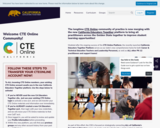
A course in Graphic Arts Technology provides students with an understanding of the processes and systems common to careers in publishing, printing, and other forms of media distribution. Representative topics include graphic design concepts; art and copy preparation; image generation and editing; desktop publishing; on-demand publishing; school yearbook and magazine layout; advertising and promotion; printing technology; binding and finishing; and screen printing.Students will be committed to lifelong learning as they grow individually, participate in groups, think analytically, create artistic products, and contribute to production of a major project. Students will learn illustration design software such as Adobe Illustrator, photo editing software such as Adobe Photoshop, and page layout software such as Adobe InDesign to create projects that will be printed in traditional and digital formats.

Students learn about an important characteristic of lines: their slopes. Slope can be determined either in graphical or algebraic form. Slope can also be described as positive, negative, zero or undefined. Students get an explanation of when and how these different types of slope occur. Finally, they learn how slope relates to parallel and perpendicular lines. When two lines are parallel, they have the same slope and when they are perpendicular their slopes are negative reciprocals of one another.

The students will be able to identify questions and concepts in the ability to construct accurate graphs, recognize and analyze alternative explanations and models by the end of this activity.

This is an activity about the relation between day length and temperature. In one team, learners will create and analyze a graph of hours of sunlight versus month of the year for a number of latitudes. In another team, learners will graph temperature versus month for the same latitudes. The teams then compare data and draw conclusions from their analyses.

This is a lesson about visual spectra. Learners will explore different ways of displaying visual spectra, including colored "barcode" spectra, like those produced by a diffraction grating, and line plots displaying intensity versus color, or wavelength. Students learn that a diffraction grating acts like a prism, bending light into its component colors. The activity is part of Project Spectra, a science and engineering program for middle-high school students, focusing on how light is used to explore the Solar System.

Students will learn about NASA's Radiation Belt Storm Probes (RBSP), Earth's van Allen Radiation Belts, and space weather through reading a NASA press release and viewing a NASA eClips video segment. Then students will use simple linear functions to examine the scale of the radiation belts and the strength of Earth's magnetic field. This activity is part of the Space Math multimedia modules that integrate NASA press releases, NASA archival video, and mathematics problems targeted at specific math standards commonly encountered in middle school textbooks. The modules cover specific math topics at multiple levels of difficulty with real-world data and use the 5E instructional sequence.
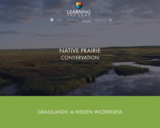
A webpage describing the grasslands ecosystem in Saskatchewan. Includes a map, descriptions, video, and interactive quizzes.
This resource can also be used for ELA CC4.4- I can write to make a descriptive narrative and expository piece. Students can use this page as a source during a research assignment.

Water travels... a lot. In fact, the water cycle is amazing and takes water all over the planet by using evaporation, condensation, and precipitation. In this episode of Crash Course Kids, Sabrina shows us how the water cycle works and how you can create a mini water cycle right in your own kitchen!

Ted Talk: On March 15th, 44 BCE, Roman dictator Julius Caesar was assassinated by a group of about 60 of his own senators. Why did these self-titled Liberators want him dead? And why did Brutus, whose own life had been saved by Caesar, join in the plot? Kathryn Tempest investigates the personal and political assassination of Julius Caesar.

Do you know how many people have been to the moon? Only 12! Part of the reason it's so few is because of how difficult it is to escape Earth and get into space in the first place. In this episode of Crash Course Kids, Sabrina talks about gravity, escape velocity, and how gravity works between two objects.